Wild Justice response to consultation on general licences.
Today Wild Justice submitted a response to the Defra consultation on general licences – it is copied below.
Wild Justice said:
There is no scientific justification for general licences to be issued to kill Jackdaws, Rooks, Jays or Magpies for the purpose of conserving wild birds. The science doesn’t show that these species have an important impact on native bird populations. All four species were listed under the General Licence GL06 which was revoked by Natural England on 25 April in response to Wild Justice’s successful legal challenge.
Response to Defra call for evidence on general licences – by Wild Justice
Wild Justice
Wild Justice is a not-for-profit company founded by Dr Mark Avery, Chris Packham CBE and Dr Ruth Tingay. Our legal challenge demonstrated the non-compliance of Natural England when issuing the now-revoked General Licences GL04, GL05 and GL06. This has prompted an urgent review of the licensing system. We are pleased that such a review is taking place as the revoked general licence regime was not only unlawful but also not scientifically robust and there is an urgent need for the licensing of bird killing to be overhauled.
Our legal challenge
Wild Justice sent, on 13 February, a Pre Action Protocol letter to Natural England claiming that the licences GL04, GL05 and GL06 which they had published on 1 January 2019 were unlawful as they did not allow Natural England to ensure that individual birds of the species listed were only killed after non-lethal means had been tried and/or properly assessed nor ensure that birds were only killed for the limited set of purposes set out in law. After considerable delay by Natural England, and an inadequate and ambiguous legal response by them (on 13 March) we lodged legal papers with the court seeking permission for judicial review of their decision on 21 March. On 23 April, Natural England announced the revocation of the General Licences GL04, GL05 and GL06 (from 25 April). Wild Justice had not asked for the revocation of these licences but had requested that once they expired on 31 December 2019 they would be replaced with a lawful alternative. If Natural England had simply complied with our request then the confusion of the last few weeks would not have occurred.
Our successful legal challenge showed that Defra (and its predecessor departments) and Natural England (and its predecessor bodies) had been running an unlawful licensing regime since 1995. We recognise that the current incumbents at Defra and Natural England did not bring this highly unsatisfactory state into being but that they are the people left holding the baby now. However, species protection is a fundamental part of nature conservation and the fact that the government department and its agency with responsibility for wildlife protection have been operating an unlawful bird-killing regime is jaw-droppingly negligent.
The legal background
The laws protecting birds are the same today as they were three weeks ago when GL04, GL05 and GL06 were in place. Our successful legal challenge has not changed the law. What is happening now is the government is rushing to try to give effect to the law accurately in its licensing system.
All birds are protected by law and have been for decades. The legislators have been wise to do this but they also recognised that there must be circumstances, not the rule but occasional circumstances, when lethal control of protected birds is necessary and acceptable. Some might argue even with this, but Wild Justice does not. We accept that lethal control of some individual birds is at times necessary and that the existing laws allow this as an exception to the general protection given to all bird species. The law stipulates that lethal control is to be used where there is no satisfactory alternative and there is an obligation on statutory agencies and government to ensure that non-lethal means are properly assessed.
For the vast majority of bird species it is necessary to apply for a specific licence in order to carry out lethal control and, in England, Natural England operates that licensing system. The specific licences require an individual or entity to apply for a licence to kill a specific species (or species plural) up to a limited number of individuals for a specified purpose, eg a supermarket may apply for a licence to kill a single bird that has entered its premises, cannot be caught or encouraged to leave and is defecating on food. This approach means that lethal killing is examined on a case by case basis and the statutory agency responsible has to make an assessment on the merits of each case. In contrast the General Licences GL04, GL05 and GL06 were simply published on the government webpage and were relied upon by an unknown number of individuals who killed an unknown number of birds but allegedly only for the purposes allowed by the law. Our challenge was not against the principle of general licences, but it is clear that the level of control of bird killing offered by specific licences is much greater than that for general licences. We do not contend that general licences cannot provide an efficient and effective way to regulate what would otherwise be unlawful bird killing, but it is obvious that the general licence approach has some drawbacks.
This year, the scale of licensed killing of protected wildlife under specific individual licences emerged thanks to information requests by Mr Jason Endfield 7. The numbers of birds killed every year under the revoked General Licences GL04, GL05 and GL06 are a matter of speculation but probably number millions of birds every year4. Wild Justice is sceptical that all of this killing was legal. Wild Justice believes that the licensing of killing of wildlife is such a fundamental part of Natural England’s public duties that it should report in some detail annually on the scale of killing that it has authorised through specific and general licences.
In the past, previous governments and agencies have seen it convenient to exempt some species of protected bird from the specific licensing system and set up the now-revoked General Licences GL04, GL05 and GL06 for bird killing. Until April there were 16 species listed on three now-revoked General Licences GL04, GL05 and GL06 which covered different conditions under which lethal control was authorised including serious damage to crops or livestock, protection of wild birds, human safety etc. These are the same conditions that apply to the specific licensing system and Wild Justice recognises that these are lawful and generally acceptable reasons for lethal control after non-lethal methods have been tried/assessed as the law requires.
The revoked General Licences GL04, GL05 and GL06 did not allow Natural England to ensure compliance with the law. Any new system of licensing must do that. We will set out our thoughts on the way forward below.
The licensed killing of otherwise protected birds has fallen into disrepute and disrepair. Many in the farming and shooting communities have wrongly believed that the species listed on the revoked General Licences were ‘pest species’ and that they had free rein to kill them at any times and without any specific justification. This is not what the law allows and, we are sure, has led to the casual and unlawful killing of millions of birds over recent years. The blame for this situation lies squarely with successive governments and statutory agencies who have not given sufficient priority to enforcing wildlife laws, publicising their content or ensuring compliance with them.
Thoughts and issues – towards a lawful and working licensing system
All the above is by way of introduction to our comments on the request by the Secretary of State for evidence that will enable him to provide clarity for the future. We almost restrict our comments to the possibility of the Secretary of State issuing general licences that would authorise the lethal control of five species of corvid (Carrion Crow, Magpie, Jay, Jackdaw and Rook) to protect wild birds, as that is our particular area of expertise. However, we make some general comments at the end and a specific point about the shooting of Woodpigeons. In all that follows Wild Justice reserves its right to take a legal challenge on any future or past decisions by the Secretary of State or Natural England (depending on who is in charge at the relevant time).
It is notable that most of the ‘problems’ addressed by the solution of killing otherwise-protected wild birds, under either general or specific licences, are human-bird conflicts. Serious damage to crops is where birds cause damage to human economic interests, likewise with livestock, spread of disease, human safety, human health etc. However, issuing a licence to kill one species of bird to protect another species of bird is another matter altogether. These species have evolved together (where native species) over thousands of years. Generally speaking, we should let them get on with it and not pick winners and losers, and not side with either the predator or the prey. But at the very least there must be some identified ‘problem’ to be solved. That ‘problem’ cannot possibly be that Species A eats Species B if that is what they have evolved to do – that’s nature. Nor can it be a ‘problem’ if Species A causes a local and/or temporary decline in numbers of Species B if those impacts are balanced out by other local or temporary recoveries in numbers elsewhere or at other times. Only if Species A is responsible for a sustained decline in Species B can this be regarded as a conservation problem, and even then one would have to question how and why the ecological balance between the two species, which presumably has lasted for thousands of years, has been disrupted in our time – and the reason for that is likely to be caused by human intervention of some sort (eg habitat destruction or degradation).
This may sound rather philosophical in nature but luckily we can park this argument for a while, as we consider the first four species one by one, as there is no good scientific evidence that Jackdaw, Rook, Jay or Magpie cause long-term sustained declines in population levels of their prey species and there is therefore no justification for issuing general licences which would allow for their control on the grounds of protecting wild birds: no general problem = no general licence in our view.
Let us now take these species one at a time:
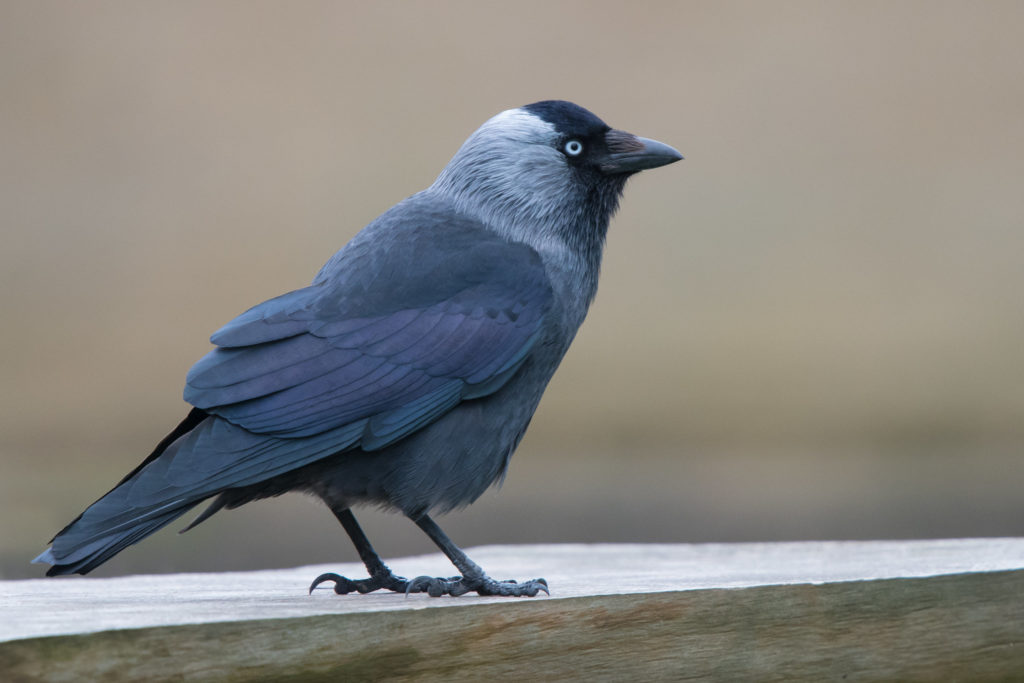
- Jackdaw: we know of no evidence that would justify issuing a general licence for the lethal killing of Jackdaws for the purpose of conserving wild birds. Jackdaws are not causing declines in the population levels of other bird species. Newson et al2,12 did not even include this species in their list of predators to be considered in their analysis even though they would have had the data to hand.
We know of no land-owning conservation organisation which killed Jackdaws regularly or in any numbers under the revoked General Licenceseg 9.
We recognise that there might, unknown to us, be circumstances under which Jackdaws cause problems for species of conservation concern but if there are, these should be dealt with under the existing specific licensing system. We recommend that no general licence should be issued for the purposes of killing Jackdaws to protect fauna or flora.
We recognise that there may be a case for authorising lethal control of Jackdaws because of serious damage to crops or livestock but that case, for serious damage, is for others to make. If such a case can be made then Defra must ensure that it is not used as a cover for more widespread casual killing of Jackdaws through prejudice.
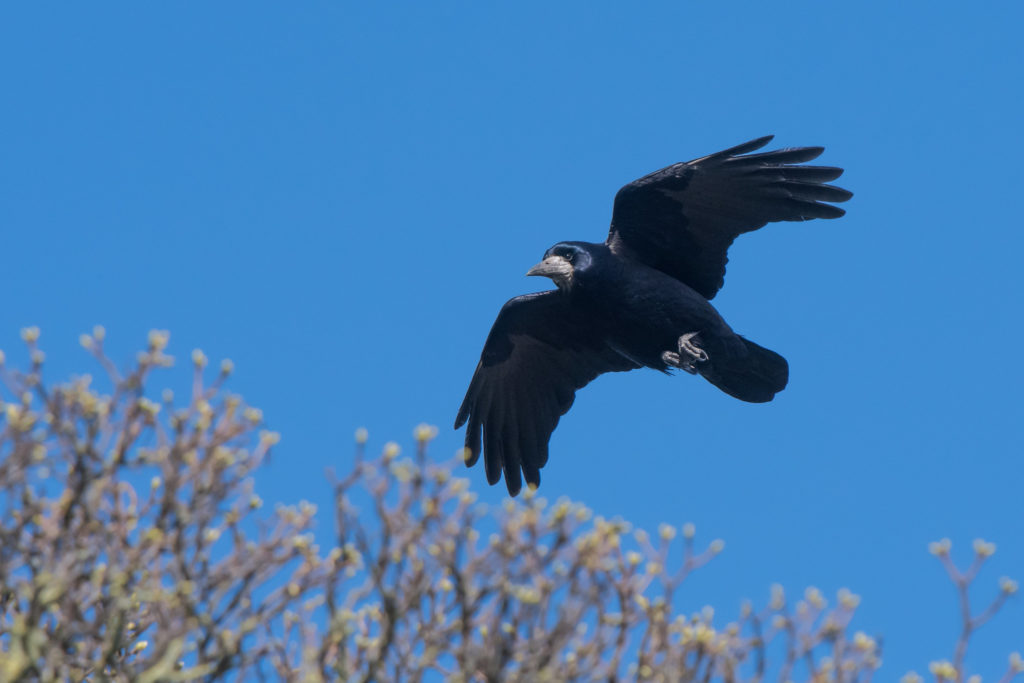
- Rook: we know of no evidence that would justify issuing a general licence for the lethal killing of Rooks for the purpose of conserving wild birds. Rooks are not causing declines in the population levels of other bird species. Newson et al2,12 did not even include this species in their list of predators to be considered in their analysis even though they would have had the data to hand.
We know of no land-owning conservation organisation which killed Rooks regularly or in any numbers under the revoked General Licences eg 9.
We recognise that there might, unknown to us, be circumstances under which Rooks cause problems for species of conservation concern but if there are, these should be dealt with under the existing specific licensing system. We recommend that no general licence should be issued for the purposes of killing Rooks to protect fauna or flora.
We recognise that there may be a case for authorising lethal control of Rooks because of serious damage to crops or livestock but that case, for serious damage, is for others to make. If such a case can be made then Defra must ensure that it is not used as a cover for more widespread casual killing of Rooks through prejudice.
In addition Defra must ensure that only Rooks killed under the provisions of the law (eg to prevent serious damage to crops) can pass into the human food chain. Shooting Rooks for Rook Pie is not, as we understand it, legal under current legislation.
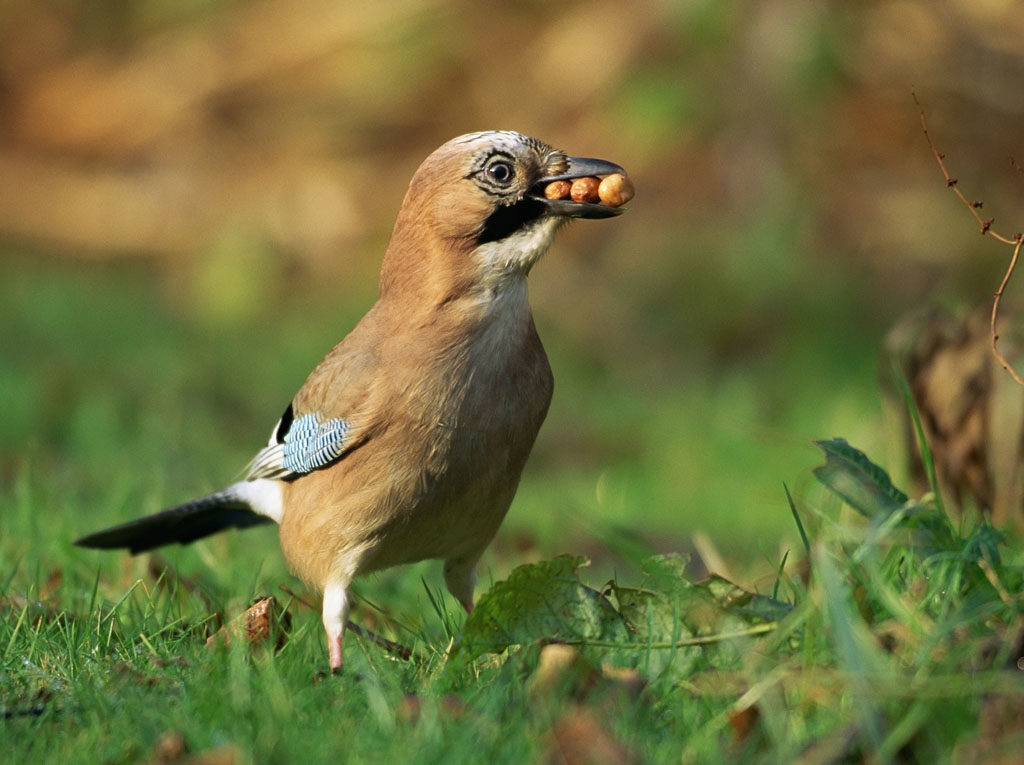
- Jay: we know of no evidence that would justify issuing a general licence for the lethal killing of Jays for the purpose of conserving wild birds. Jays are not causing declines in the population levels of other bird species. Newson et al2,12 found little evidence that predation by Jays affected the population levels of a large suite of potential prey species (mostly songbirds but also pigeons and Lapwing) and where there was any relationship it was often positive rather than negative.
We know of no land-owning conservation organisation which killed Jays regularly or in any numbers under the revoked General Licences eg 9.
We note that in a recent blog, the Chief Executive of the BTO, Dr Andy Clements, who is also a Board member of Natural England, wrote that ‘there may be insufficient scientific evidence to merit the inclusion of Jay on the licence list in order to conserve birds’1. We agree with this view although believe that there is no ‘may be’ about it and that the same argument applies to Jackdaw and Rook (above).
We recognise that there might, unknown to us, be circumstances under which Jays cause problems for species of conservation concern but if there are, these should be dealt with under the existing specific licensing system. We recommend that no general licence should be issued for the purposes of killing Jays to protect fauna or flora.
We do not recognise any case for authorising lethal control of Jays because of serious damage to crops or livestock.
We recommend that no general licence is issued for the killing of Jays and that any rare circumstances that might arise when there is any such case should be dealt with under the specific licensing system.
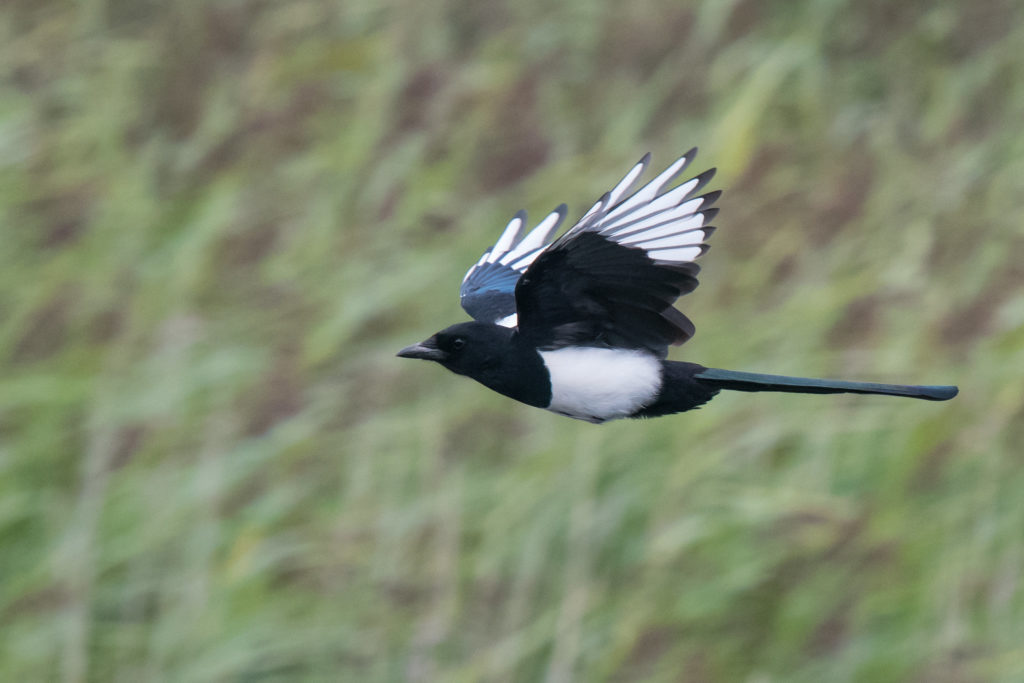
- Magpie: we know of no evidence that would justify issuing a general licence for the lethal killing of Magpies for the purpose of conserving wild birds. There have been several large correlative studies of impacts of Magpies on various species of potential prey, mostly songbirds, but none has found any strong evidence for impacts – indeed there are often as strong evidence for positive impacts as negative ones2,6,12,15. Where it has been possible to attempt to disentangle the impacts of Magpies and Carrion Crows on prey species, these very strongly point to the Carrion Crow having a much greater impact than the Magpie, and the Fox is a bigger problem than the Carrion Crow11.
We know of no land-owning conservation organisation which killed Magpies regularly or in any numbers under the revoked General Licences eg 9.
We recognise that there might, unknown to us, be circumstances under which Magpies cause problems for species of conservation concern but if there are, these should be dealt with under the existing specific licensing system. We recommend that no general licence should be issued for the purposes of killing Magpies to protect fauna or flora.
We do not recognise any case for authorising lethal control of Magpies because of serious damage to crops or livestock.
We recommend that no general licence is issued for the killing of Magpies and that any rare circumstances that might arise when there is any such case should be dealt with under the specific licensing system.
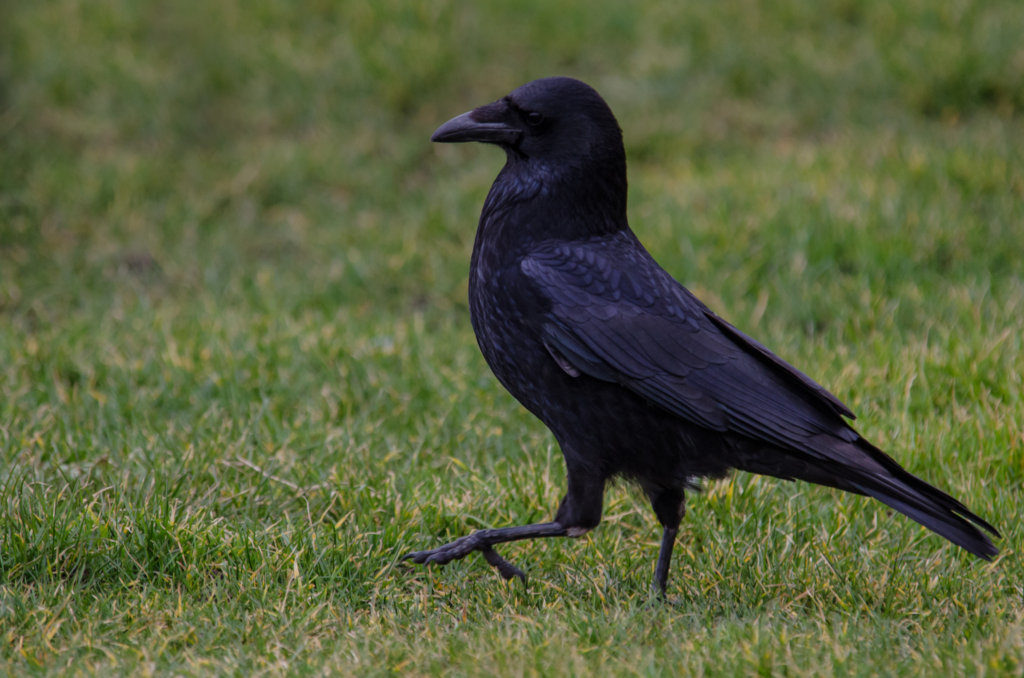
- Carrion Crow: there is, in contrast to the four species above, evidence that Carrion Crows can cause problems for some species of conservation concern11 and Wild Justice recognises that, as a last resort, lethal control is allowed by the law and is sometimes warranted for nature conservation purposes.
In contrast to the position with the four corvid species above, several conservation organisations do carry out lethal control of Carrion Crows on their land and receive criticism from many sides for doing so eg 9.
However, the species on which Carrion Crows have a population-level impact are few in number and in all these cases the evidence points to Foxes being a larger problem than Carrion Crows11. The evidence suggests that songbirds are not seriously affected by Carrion Crows; their impact seems particularly manifest with ground-nesting birds, but not all ground-nesting birds. The main species of ground-nesting bird where some control of Carrion Crows appears to be justified, on conservation terms, by the science, are Curlew, Lapwing and Grey Partridge. These three species do not occur in all parts of England or in all habitats and so we question the wisdom of any nationwide general licence. Killing Carrion Crows in Cornwall, for example, is of no value to the conservation of Curlew, Lapwing or Grey Partridge and such a general licence would be disproportionate.
We would be prepared to play a part in discussions to find a sensible way forward on this issue.
But part of any sensible discussion would have to consider how it is that Carrion Crow and, for example, Curlew numbers now appear to be in conflict.
We should first recognise that Carrion Crow numbers (and Fox numbers, for similar reasons) are much higher in the UK than in most European countries. Our populations of generalist predators are noticeably out of step with those in other European countries.
There are three main reasons, all of which are to do with man-made changes to the landscape, and all of which the Secretary of State has the power to reduce and/or ameliorate. Indeed, we would argue that addressing these issues at a strategic level amounts to a ‘satisfactory non-lethal alternative’ that the law requires, and that these measures are ones which only government can take. We would therefore suggest that the Secretary of State has a duty to implement these changes rather than authorise widespread lethal control of native species because their populations have been artificially inflated by man-made factors which are threefold;
- Agriculture: intensive agriculture has
made the landscape more attractive to successful generalist such as Carrion
Crows at the expense of specialists like Curlew. For example, silage making
will increase feeding opportunities for Carrion Crows and reduce breeding
success of Curlews. There are other
examples.
- Massive releases of non-native gamebirds: Over 50 million Pheasants and Red-legged Partridges are reared and released into the UK countryside each year. Around a third of them are shot so tens of millions each year die of other causes and are killed by predators or perhaps scavenged by predators after dying in road traffic accidents, of disease or other factors. This food bonanza, particularly over the winter period, is very likely to maintain high numbers of Carrion (yes, the clue is in the name ‘Carrion’) Crows, Foxes etc which then may predate species of conservation concern the following spring. Feeding the problem and then attempting to control it through lethal means is ridiculous. Defra were asked in March 2014 by Labour MP for Corby, Andy Sawford, ‘What research has been done that addresses the range of ecological costs and benefits of rearing and releasing Pheasants for shooting? Does native wildlife benefit or is it harmed by Pheasant shooting? Does Defra have plans to do any such research?‘ and answered, ‘Defra has not assessed the impact of releasing pheasants or red-legged partridges on biodiversity and is not currently planning any research in this area due to other biodiversity research priorities.‘.
- Lack of native predators: , if the UK had a more complete fauna of large predators then species like Goshawk would reduce Carrion Crow numbers and alter their ranging and feeding behaviour and reduce their impacts on species such as Curlew.
The flooding of the countryside with non-native gamebirds, the continuing illegal killing of native predators and the conditions created by modern intensive agriculture are the ultimate conditions which have given rise to species declines whose proximate cause might be high predation by Carrion Crows (and Foxes). The solution may, in the short term be some targeted lethal control of some predator species in some places but the strategic solution, almost wholly in Defra’s gift, is better management of the countryside for wildlife (a vast subject but relevant to the National Park review currently being carried out by the Glover committee), strict regulation of gamebird releases leading to a very large reduction in numbers released each year and effective enforcement of the existing laws which protect predatory birds (and mammals).
Conclusion: of the five corvid species considered above there is no good scientific evidence that four of the species (Magpie, Jay, Jackdaw and Rook) cause any population-level problems for nature conservation whatsoever. There is therefore no scientific justification for issuing open general licences for their lethal control in order to protect wild birds. For the Carrion Crow there is scientific evidence of a problem in specific circumstances but lethal control of Carrion Crows is addressing the symptoms of mismanagement of the countryside rather than their causes. Defra is uniquely placed to address these underlying causes.
General points:
- Failure to comply with Gunning principles: This consultation fails on two of the Gunning principles: Principles 2 and 3. On Principle 2 this consultation does not give sufficient information to allow intelligent consideration as it is vague about what it covers, it does not set out Defra’s plans or options, it does not state whether the Defra timetable or general intent for issuing licences resembles or has diverged from that set out by Natural England since 25 April and it makes no attempt to explain what the promised further consultation later in the year will cover that this consultation does not. It’s a mess. It also fails on Principle 3 as an announcement on a Saturday that responses must be received by the following Monday week when there is a Bank Holiday intervening leaves only five working days to consider this complicated subject. For postal submissions this leaves less than four full working days, depending on the time of the last post. Wild Justice could have prepared a more comprehensive response without these two failings in this consultation and we suspect that the urgency is more to do with Defra wanting to appear to be in control of things rather than any particular urgency on the ground now we have reached mid May which is after the main lambing period and after the period of damage to crops by most birds.
- Woodpigeons: an unforeseen consequence of our successful legal challenge is that a spotlight has been thrown on the shooting of Woodpigeons. As far as we can make out, the shooting of Woodpigeons for ‘sport’ or for food is not authorised under any current legislation. Woodpigeons that are legally shot, eg for the purpose of preventing serious damage to crops, may be sold as food. Any cursory reading of the shooting press will reveal that there is a lot of shooting of Woodpigeons for sport or commerce outside of the terms of the law. This is presumably why, buried away in the recently-published GL31 is the phrase ‘IMPORTANT: this licence does not permit the killing of woodpigeons solely for commercial and/or recreational purposes, and only activities conducted in accordance with this licence are authorised. If there is evidence that this licence is being used inappropriately then Natural England may review this licence.’. We believe that there is plenty of evidence that Woodpigeons were being shot for the purposes of commercial and recreational purposes before the revocation of GLO4, GL05 and GL06 and would be amazed if this is not continuing now – at a time when shooting of Woodpigeons to prevent serious damage to most crops is long gone (especially for Oil Seed Rape). Now it may be that society thinks that Woodpigeons should be a species that can be shot for recreational or commercial purposes but that is not the current legal position as we understand it. Defra should take urgent and active steps to make this clear to stakeholders which go far beyond two sentences buried in GL31. Defra may wish to consider legislative change on this matter and if it does then it should take that opportunity to specify that only non-toxic shot should be used for these purposes in line with the recommendations of the Lead Ammunition Group report of 201510and the science laid out in the Oxford Lead Symposium of 201513.
- Non-native gamebirds: much lethal control of corvid species under the revoked General Licences Gl04, GL05 and GL06 was by gamekeepers rather than farmers. And much of that lethal killing will have been to protect non-native gamebirds (Pheasant and Red-legged Partridges) which are released into the countryside in their tens of millions each year4.
The legal status of these species is problematic: whilst in captivity (eg rearing pens) they are classed as livestock. When released into the countryside they are classed as wild birds and form the stock of birds which are shot as gamebirds during their respective open seasons. These wild birds (or at least the survivors after the shooting season) may be taken back into captivity at the end of the shooting season and revert to being livestock again. Natural England has already published a licence, General Licence GL26 which is a general licence for authorising lethal control of Carrion Crows, which treats gamebirds which are released but still being ‘tended’ as livestock.
Of course, many gamebirds released in previous years survive as wild birds in the countryside and nest as ‘wild’ birds despite the fact that if it were not for annual massive releases of more of their conspecifics their populations would quite possibly dwindle away. If Defra intends to issue general licences to kill large numbers of native birds largely to protect non-native birds which are destined to be shot at later in the year then it should make this perfectly clear in its licences.
- Mammals: Although the implementation of laws relating to killing of wild birds has been grossly inadequate the law has been clear and has a logical framework. In contrast the legal protection given to wild mammals in the UK is a hotchpotch with little clear rationale behind it. Defra might wish to look at these matters in the Environment Bill or elsewhere.
- Poor regulatory framework for killing of wildlife: sport shooting is largely unregulated in the UK in contrast with many European countries where hunters and shooters need to be licensed, or the landholdings on which they shoot need to be licensed. No quotas are set for quarry species and there is no reporting of species-specific annual bags. The game shooting industry is the major source of wildlife crime against protected birds of prey. Government must do more to provide a strong regulatory framework, meaningful enforcement and publicity for good and bad practice.
- Bird identification: many land managers (not all, by any means) have poor bird identification skills and will be uncertain about how to tell a Rook from a Carrion Crow (or even a Jackdaw, and probably a Raven). There may well be many farm workers who do not know the difference between a Woodpigeon and a Stock Dove. This is an unsatisfactory state of affairs under which to issue general licences where the issuing authority cannot be sure that the users of the licences are capable of identifying the species correctly.
- Wild Justice should have a seat at the table: we have seen much mention of meetings and phone calls between Defra and Natural England and stakeholder groups – we have had no communication from either Natural England or Defra on this matter (except a general email to stakeholders announcing this consultation) since we received Natural England’s email conceding the correctness of our legal challenge on 23 April.
References
- BTO blog by Dr Andy Clements, 3 May 2019. https://www.bto.org/community/blog/general-licences-and-bto
- BTO Press release. 2010. Are predators to blame for songbird declines? https://www.bto.org/about-bto/press-releases/are-predators-blame-songbird-declines
- Defra response to letter from Andy Sawford MP, March 2014. https://markavery.info/2014/03/31/letter-mp-response-defra-1/
- Game and Wildlife Conservation Trust. 2018. How many birds are shot in the UK? Game and Wildlife Review 2017 pp. 41-2
- Game and Wildlife Conservation Trust. 2019. The impact of pheasant releases: balancing the positive with the negative. https://www.gwct.org.uk/game/research/species/pheasant/the-impact-of-pheasant-releases/
- Gooch, S, Baillie, SR and Birkhead, TR, 1991. Magpie Pica pica and Songbird Populations. Retrospective Investigation of Trends in Population Density and Breeding Success. Journal of Applied Ecology 28: 1068-1086 DOI: 10.2307/2404226
- The Guardian; Watchdog permits 170,000 wild bird killings in five years. https://www.theguardian.com/environment/2019/feb/22/conservation-body-issues-170000-wild-bird-kill-permits-in-five-years
- The Gunning principles https://www.google.com/search?client=firefox-b-d&q=Gunning+Principle+3
- Harper, M (RSPB), 2018. The conservationist’s dilemma: an update on the science, policy and practice of the impact of predators on wild birds (5) https://community.rspb.org.uk/ourwork/b/martinharper/posts/the-conservationist-39-s-dilemma-an-update-on-the-science-policy-and-practice-of-the-impact-of-predators-on-wild-birds-5
- Lead Ammunition Group – report to Defra. http://www.leadammunitiongroup.org.uk/wp-content/uploads/2015/06/LAG-Report-June-2015-without-Appendices.pdf
- Madden, CF, Arroyo, A and Amar, A. 2015. A review of the impacts of crows, ravens and Eurasian Magpies on bird productivity and abundance. Ibis 157: 1–16 https://onlinelibrary.wiley.com/doi/full/10.1111/ibi.12223
- Newson, SE, Rexstad, EA, Baillie, SR, Buckland, ST & Aebischer, NJ. 2010. Population changes of avian predators and grey squirrels in England: is there evidence for an impact on avian prey populations. Journal of Applied Ecology 47: 244-252 doi: 10.1111/j.1365-2664.2010.01771.x https://besjournals.onlinelibrary.wiley.com/doi/full/10.1111/j.1365-2664.2010.01771.x
- Oxford Lead Symposium. http://oxfordleadsymposium.info/
- Roos, S, Smart, J, Gibbons, D and Wilson, J, 2018. A review of predation as a limiting factor for bird populations in mesopredator‐rich landscapes: a case study of the UK Biol Rev 93: 1915-1937 https://doi.org/10.1111/brv.12426
- Thompson, D, Green, RE, Gregory and Baillie, SR. 1998. The widespread declines of songbirds in rural Britain do not correlate with the spread of their avian predators. Proceedings of the Royal Society of London, B 265: 2057-2062 https://www.ncbi.nlm.nih.gov/pmc/articles/PMC1689492/pdf/4YFJT1PK3R1AV59K_265_2057.pdf
Wild Justice, 9 Lawson Street, Raunds, Northants, NN9 6NG.
